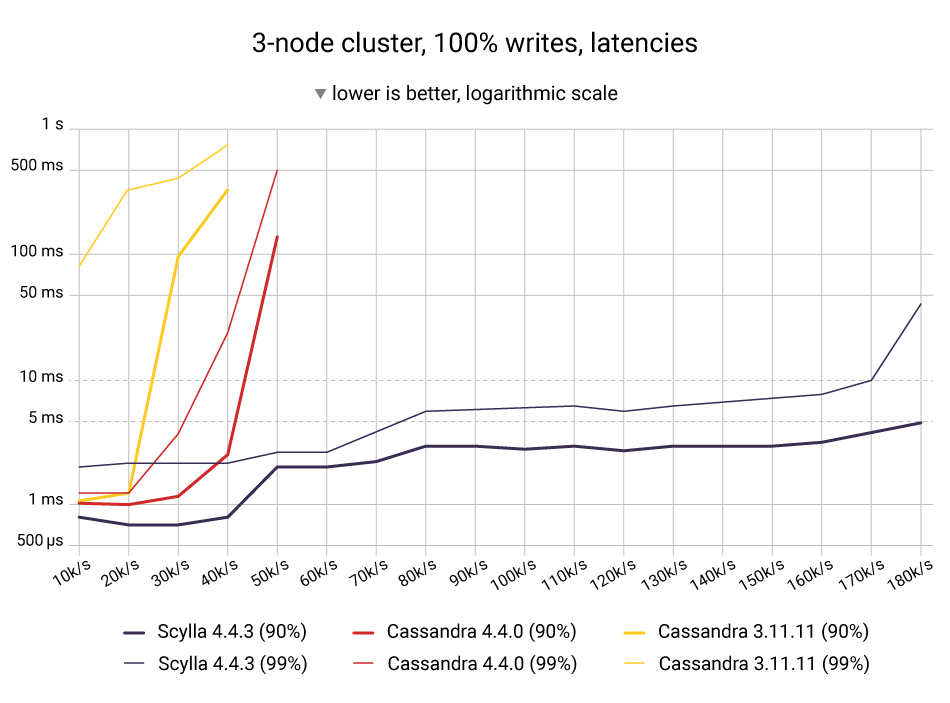Cassandra Stress FAQs
What is Cassandra Stress?
The Java-based Cassandra stress tool is a stress testing utility for load testing and basic benchmarking of Cassandra clusters and clusters on Cassandra alternatives such as ScyllaDBSpecific decisions in data modeling can impact application performance in significant ways. Meaningful load testing across multiple trials is the ideal technique for identifying a particular data model’s performance issues.
The Cassandra stress test tool is a useful solution for testing Cassandra Query Language (CQL) tables and queries and populating a cluster.
The tool also supports a YAML-based Cassandra stress user profile. This is designed to define specific Cassandra stress schemas with various cache settings, compaction strategies, and types. Find sample files in the tools directory:
- cqlstress-example.yaml
- cqlstress-counter-example.yaml
The YAML file supports user-defined tables, keyspaces, and schema. It can be used to design read tests, write tests, and mixed workloads.
Depending on what type of table is being tested, even without a YAML file, cassandra-stress can create keyspaces and and tables. The first time the user runs a stress test, these elements are created automatically, and then each time a stress test is run, they are reused. However, there is no way to alter the default table names and keyspace without a YAML file.
What are Some Cassandra Stress Alternatives?
There are a number of alternative benchmarking tools to Cassandra Stress. For example:
Cassandra Stress Use Cases
Use cases for the Cassandra stress tool include:
- Evaluate schema performance as you experiment with data modeling
- Determine the impact of configuration changes
- Assess whether your database can latency SLAs and satisfy expected throughputs
- Compare infrastructure options (e.g., one AWS or GCP instances vs another)
Does Cassandra Stress work with ScyllaDB?
Yes. Since ScyllaDB is API-compatible with Apache Cassandra, you can use this powerful Cassandra stress to benchmark ScyllaDB.
Here is are examples of ScyllaDB benchmarks that use Cassandra Stress:
- Cassandra 4.0 vs. Cassandra 3.11: Performance Comparison
- Apache Cassandra 4.0 vs. ScyllaDB 4.4: Comparing Performance
- Benchmarking Apache Cassandra (40 Nodes) vs ScyllaDB (4 Nodes)
How to use Cassandra Stress: An Example with ScyllaDB?
This benchmarking best practices blog provides a step-by-step explanation of how to benchmark with the Cassandra stress tool as well as comparable benchmarking tools It covers:
- Setting your throughput level
- Measuring latency the right way
- Measuring latency percentiles and multiple loaders
- Setting the number of threads
- Setting the number of connections

